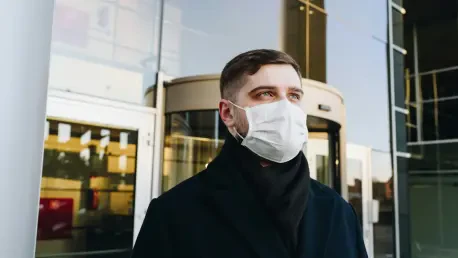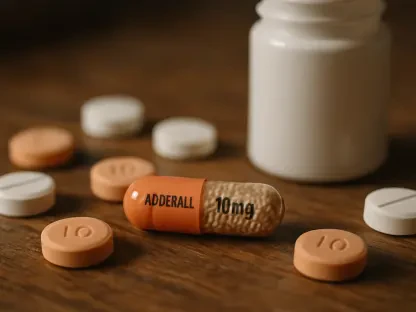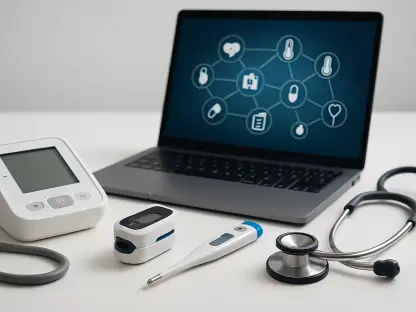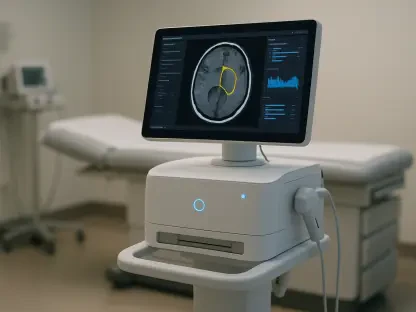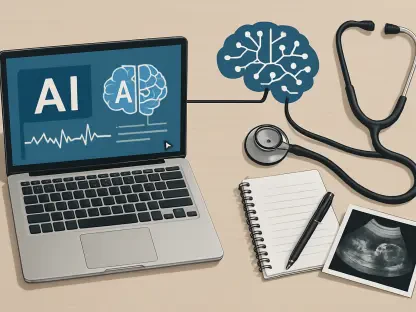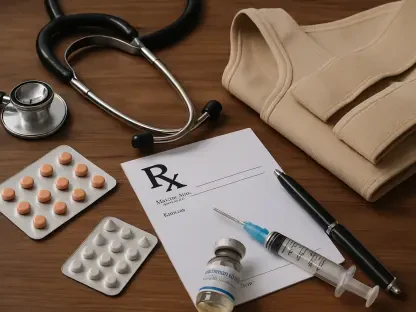In this interview, we’re joined by James Maitland, a leading expert in robotics and IoT applications in medicine. James shares his insights into the groundbreaking study on the use of PET imaging to detect long-term heart and lung damage from COVID-19, highlighting significant implications for future cardiopulmonary conditions and public health strategies.
Can you explain what PET imaging is and how it works in the context of detecting heart and lung damage from COVID-19?
PET imaging is a powerful diagnostic tool that uses radioactive tracers to visualize metabolic processes in the body. In the context of COVID-19, it provides a detailed look at inflammation and other structural changes that might not be apparent in standard assessments like X-rays or CT scans. The hybrid PET/MRI used in the study integrates both metabolic and structural imaging, revealing hidden alterations in the heart and lungs of long COVID patients, which are crucial for forecasting potential health issues.
What were the major findings regarding heart and lung damage in COVID-19 patients one year after their initial infection?
The study showed that even a year post-infection, a significant number of patients exhibited inflammation in key areas like the heart muscle, pericardium, and blood vessels. There were also structural changes, including scarring and thickening of the heart muscle, fluid accumulation, and vascular inflammation in the aorta and pulmonary arteries. These alterations point towards the long-lasting impact of COVID-19 and underline the necessity for a more detailed, ongoing assessment of cardiopulmonary health in affected patients.
How do the plasma protein analyses support your imaging findings?
Plasma protein analyses worked hand-in-hand with the imaging techniques by identifying markers indicative of inflammation and immune activity. These markers resonated with the imaging findings, reinforcing the idea that the inflammation observed in the patients’ heart and lung tissues is linked to a broader systemic response. This convergence of imaging and biochemical data strengthens the credibility of the observed cardiopulmonary alterations.
What are the implications of these findings for patients suffering from long COVID?
For patients battling long COVID, these findings highlight the importance of ongoing monitoring for potential heart and lung issues. This study suggests a predisposition to conditions such as premature coronary artery disease or pulmonary hypertension. The insights gathered can pave the way for better detection strategies and preventive measures, potentially reducing the long-term impact on patients’ health.
How should healthcare providers change their approach to treating and monitoring patients with long COVID symptoms based on your study?
Healthcare providers should consider integrating advanced imaging techniques like PET/MRI into standard evaluation protocols for long COVID patients. Recognizing the cardiovascular risks posed by prolonged inflammation, early molecular imaging could play a crucial role in detecting and mitigating future cardiopulmonary events. This approach ensures that the lingering impact of COVID-19 is not underestimated in routine care.
Can you discuss the potential risk factors for developing premature coronary artery disease, pulmonary hypertension, and heart valve damage due to COVID-19?
COVID-19 seems to set the stage for these conditions through persistent inflammation and structural changes in the heart and blood vessels. The risk may be significant, especially for patients showing pronounced symptoms of long COVID. Long-term inflammation and immune responses triggered by the virus can weaken cardiovascular health, emphasizing the need for vigilance in managing these risks.
What challenges did you face in conducting this study, and how were those challenges addressed?
Conducting the study was inherently challenging due to the diverse presentations of long COVID symptoms and the necessity for robust selection criteria to ensure relevant findings. The team focused on selecting patients with persistent cardiorespiratory symptoms a year after infection, ensuring that their condition warranted detailed imaging evaluations. Such stringent criteria helped ensure that the study’s conclusions were both reliable and applicable.
Looking forward, what further research do you believe is necessary to address COVID-19’s long-term impacts on the heart and lungs?
Further investigations should explore the progression and resolution of these inflammatory and structural changes over time, potentially focusing on therapy efficacy for mitigating these impacts. Longitudinal studies that track patients over several years could illuminate the true extent of COVID-19’s effects and refine treatment protocols to better handle its long-lasting impacts.
Is there anything else you would like to share about this study or its importance in the wider context of COVID-19 research?
The study acts as a stepping-stone in understanding the multifaceted ramifications of COVID-19 beyond the acute phase. It underscores the need for integrating advanced imaging techniques into routine healthcare and challenges us to think about how diseases can alter our organ systems long after the initial infection. The implications for public health policy are profound, as we must prepare for and prevent long-term cardiovascular complications that stem from pandemic diseases.
What is your forecast for future advancements in the use of imaging technologies in medicine?
Both robotics and IoT applications will likely revolutionize imaging technologies, making them more accessible and enhancing real-time monitoring capabilities. As these technologies advance, they will play a pivotal role in non-invasively diagnosing, tracking, and tailoring treatment for a myriad of conditions, promising a new era in personalized and precision medicine.
